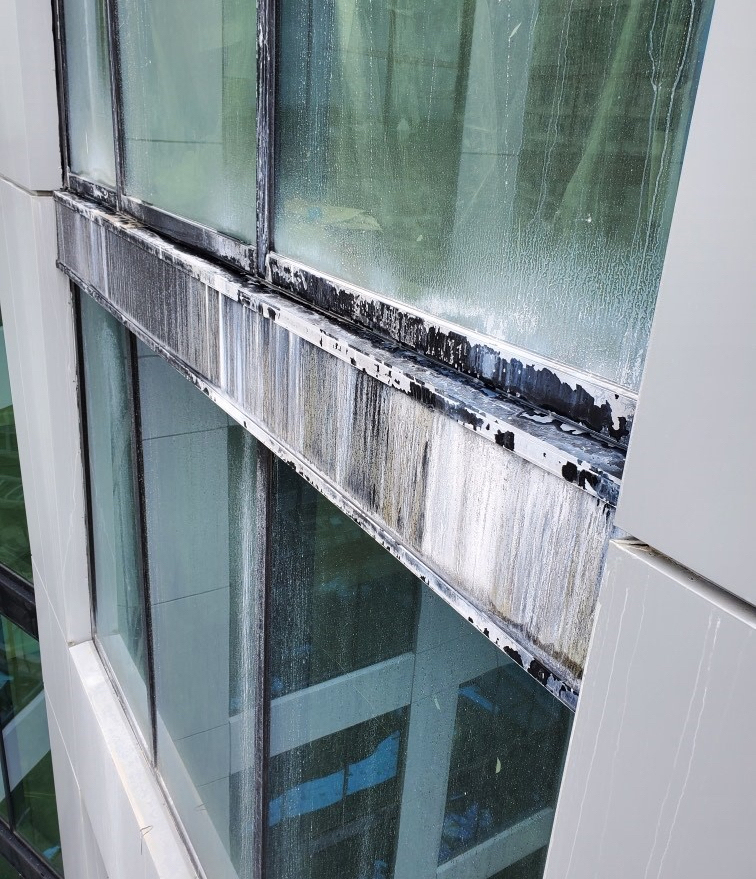What You Need to Know About Corrosion and Aluminum
Prevention, warranties and more

Color retention, chalk resistance, and adhesion typically are noted in warranties for finishes on architectural aluminum products. But it’s very unlikely you’ll find a warranty that mentions corrosion.
This is because the warranties are for the finish itself, not the underlying metal where corrosion could take place. Durable, high-performance finishes can help protect your architectural aluminum from corrosion, even if this is not explicitly stated in the warranty.
What is corrosion?
Corrosion is the gradual degradation of a substance, often associated with metal, by chemical action. Corrosion may conjure up images of a rusting ship on the seafloor, old machinery left immobile in a field or a pitted Viking-age sword from an archeological dig.
These common examples of corrosion involve the oxidation of iron and iron alloys resulting in rust. Rust forms on iron in the presence of water and oxygen then flakes off, exposing the underlying metal and allowing rust to form again.
Aluminum, on the other hand, does not rust in the presence of oxygen and water. Instead, it forms a relatively stable oxidized layer that protects against the metal from further corrosion. In fact, this is how anodize finishes are created; by tightly controlling and enhancing the oxidation process. A correctly applied, properly specified finish can establish a flawless protective layer on architectural aluminum to prevent corrosion.
Understanding and preventing corrosion in aluminum
Under certain conditions, aluminum may progressively corrode in the presence of other chemicals, namely sulfates and chlorine. These chemicals come into contact with architectural aluminum through two main sources: acid rain, such as in urban areas with heavy pollution, and salt spray, such as in coastal climates.
Aluminum is most likely to corrode at flaws and grain boundaries where the oxide layer is inconsistent, such as the edge of a product, a bend or a scratch. When the protective finish is compromised, corrosion can take hold. Minor damage can lead to significant corrosion if moisture that contains chlorine or sulfates collects on exposed aluminum without a pathway to drain or evaporate.
Great care should be taken when working with strong acidic or alkaline substances, like mortar or muriatic acid, which can damage finishes. Metal tools can scratch and gouge finishes. Cleaning of painted and anodized aluminum finishes should be done using mild soap solutions at most, and usually these low-maintenance finishes only require a rinse with clean water.
If the protective finish layer stays whole and intact, it’s more likely that the aluminum also would be protected from corrosion. When selecting a finish for aluminum material that may be exposed to corrosive conditions, specify it to meet the highest performance standards available from the Fenestration and Glazing Industry Alliance (FGIA).
For anodize, this is AAMA 611 for Class I anodize. For paint, this is AAMA 2605 for 70 percent PVDF resin-based architectural coatings. Unless a particular project is in an extreme environment or improperly applied, one should expect these high-quality finishes to last several years beyond the warranty period.


